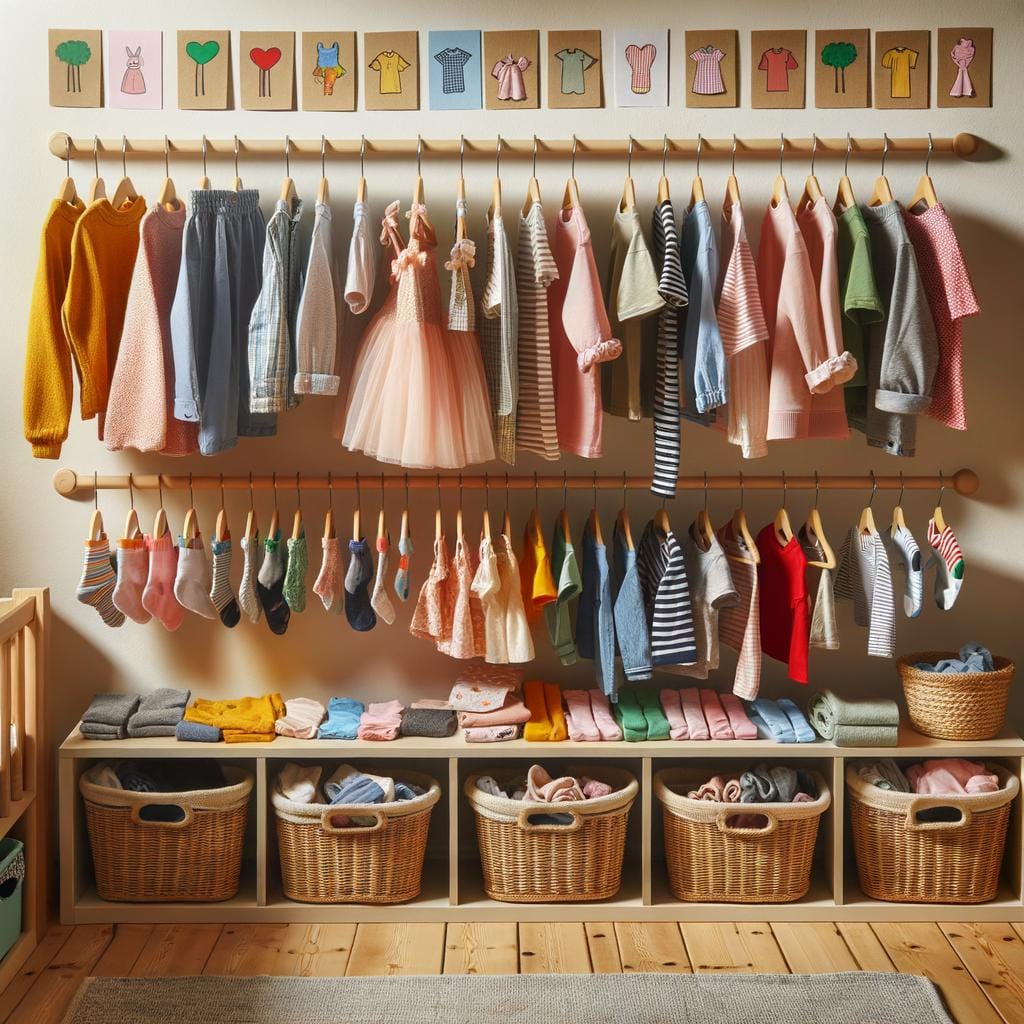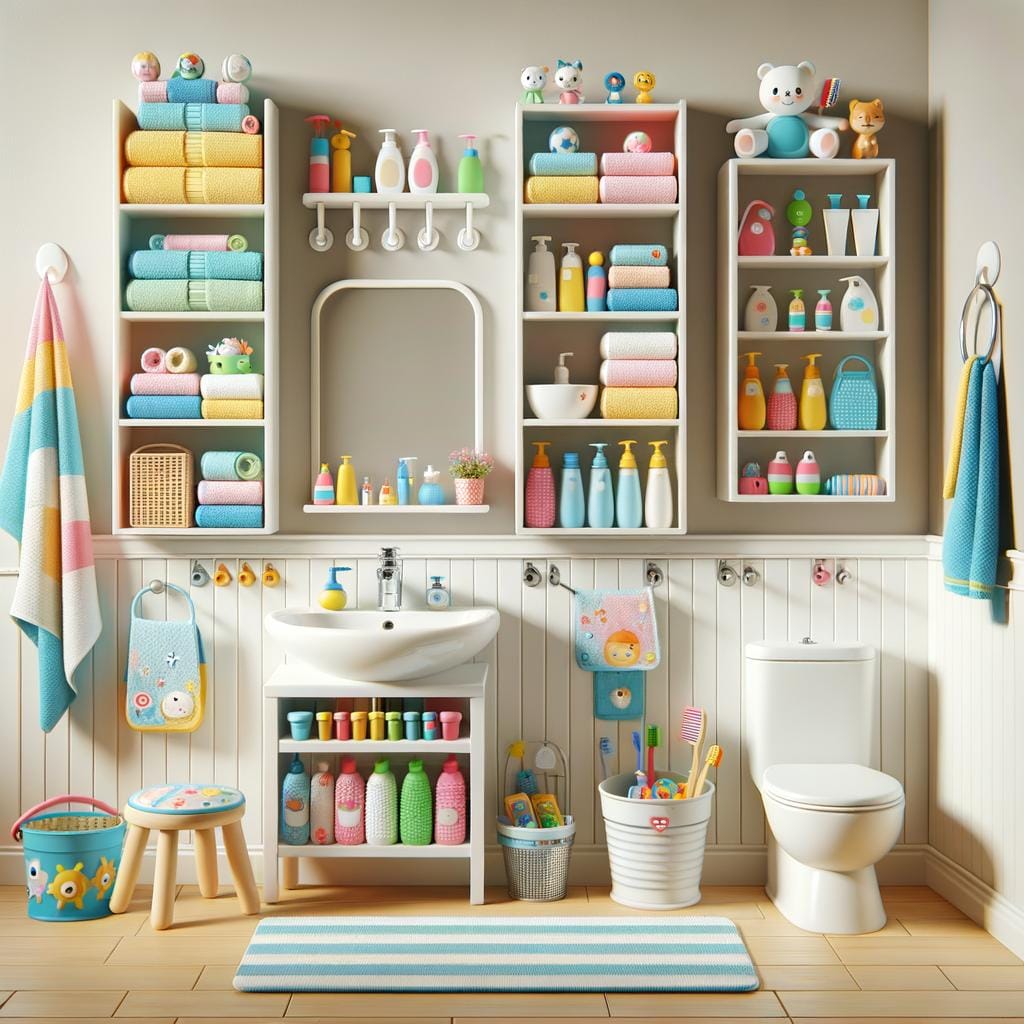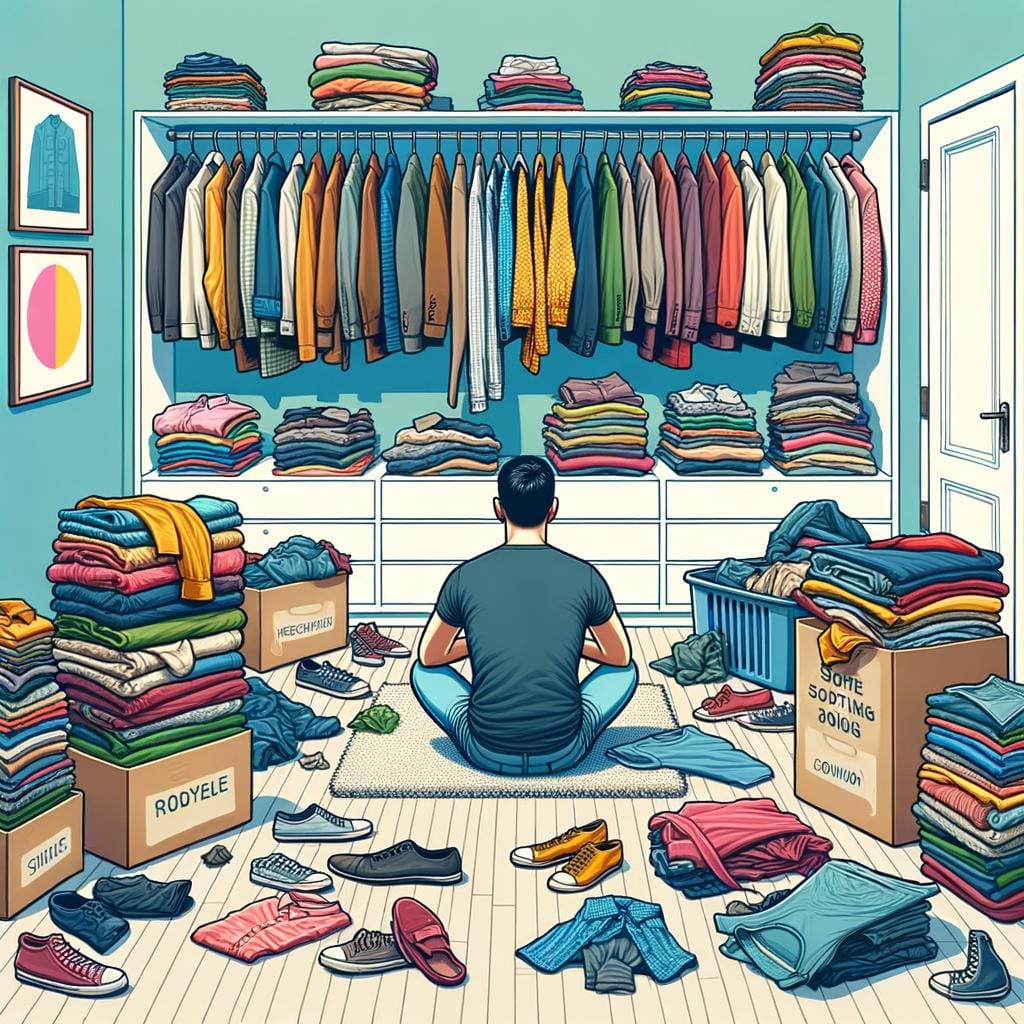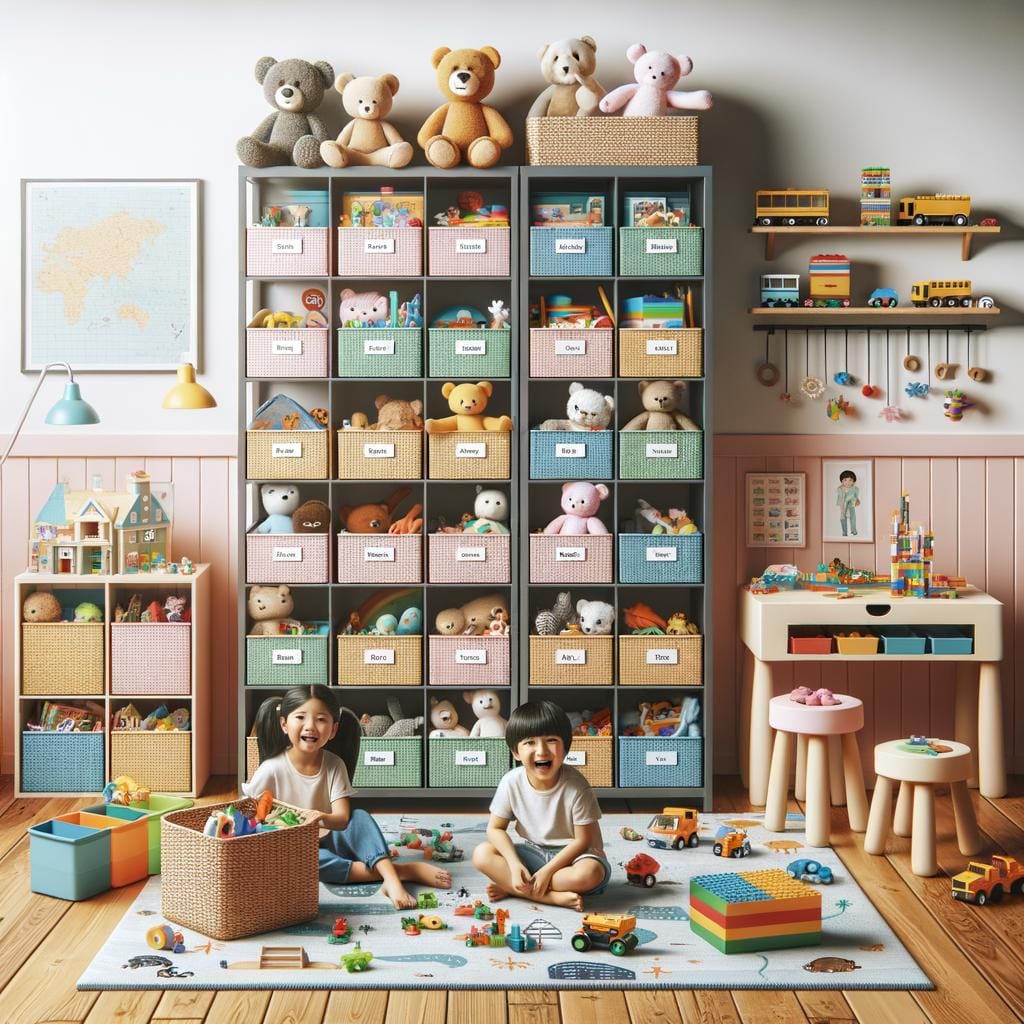Are you tired of dealing with messy closets and drawers filled with scattered clothes? When it comes to children’s clothing, keeping everything organized can be a challenge.
In this article, we will explore the world of clothes organizing for children and provide you with tips and tricks to create a system that works for both you and your little ones. Teaching children how to organize their clothes not only helps in maintaining a tidy living space but also instills valuable organizational skills that they can carry into adulthood.
One of the key benefits of teaching children to organize their clothes is the development of responsibility and independence. By involving kids in the process of organizing their wardrobe, they learn how to make decisions about what to keep, what to donate, and how to maintain order in their personal space. This practice not only promotes good habits but also boosts their self-esteem as they take ownership of their belongings.
Creating an organized clothing storage system for kids may seem like a daunting task, but with some creativity and effective strategies, it can become a fun and rewarding experience for both parents and children. By implementing child-friendly closet organization ideas and making the process enjoyable, you can transform a mundane chore into a bonding activity that teaches valuable life skills.
So let’s dive into the world of clothes organizing for children and discover how you can make this task easier and more enjoyable for everyone involved.
Benefits of Teaching Children to Organize Their Clothes
Teaching children to organize their clothes can have numerous benefits that extend beyond simply keeping their room tidy. Instilling good organizational habits from a young age can help children develop important life skills that will serve them well into adulthood. Here are some key advantages of teaching children to organize their clothes:
1. Promotes Independence: By teaching children how to organize their clothes, they become more self-reliant and capable of taking care of their belongings without constant supervision.
2. Encourages Responsibility: Organizing their own clothes teaches children the importance of taking responsibility for their possessions and caring for them properly.
3. Develops Decision-Making Skills: When children are involved in choosing how to organize their clothes, they learn to make decisions and problem-solve, which are valuable skills they can apply in various aspects of their lives.
Additionally, involving children in the process of organizing their clothes can also foster a sense of ownership and pride in maintaining a clean and organized space. This not only benefits them personally but also contributes to a more harmonious home environment for the whole family. By encouraging children to take an active role in organizing their clothes, parents can empower them with valuable skills that will benefit them long-term.
Tips for Creating an Organized Clothing Storage System for Kids
Creating an organized clothing storage system for kids is essential in maintaining order and efficiency in their daily routines. A well-organized system not only saves time but also teaches children valuable skills in responsibility and independence. Here are some tips to help you create the perfect clothing storage system for your little ones.
Utilize Kid-Friendly Storage Solutions
When organizing clothes for children, it’s important to consider their height and reach. Utilize kid-friendly storage solutions such as low-hanging rods, adjustable shelves, and labeled bins or baskets. This will make it easier for children to access and put away their own clothes without requiring assistance from adults.
Sort Clothes by Category
To make it easier for children to find what they need, sort their clothes by category. Designate specific areas in the closet or dresser for different types of clothing such as tops, bottoms, pajamas, and accessories. This not only helps children locate items quickly but also teaches them how to categorize and organize their belongings efficiently.
Label Everything
Labeling is key when it comes to clothes organizing for children. Use colorful labels or pictures to help kids identify where each item belongs. This visual aid not only adds a fun element to the organization process but also reinforces memory and language skills in young children. Consider using labels with both words and images for easy recognition.
Importance of Involving Children in the Organizing Process
Involving children in the process of organizing their clothes can have numerous benefits, not only for your child’s independence and responsibility but also for your peace of mind as a parent. When kids take an active role in organizing their clothes, they develop essential life skills and habits that will serve them well into adulthood. By teaching children how to organize their clothes early on, you are setting them up for success in managing their possessions and time effectively.
Teaching Responsibility and Independence
One of the key benefits of involving children in the clothes organizing process is that it teaches them responsibility and independence. By assigning tasks such as folding clothes, hanging up garments, and putting away items in designated spaces, you are instilling a sense of ownership and accountability in your child. This not only helps them understand the value of taking care of their belongings but also promotes self-sufficiency as they learn to manage their wardrobe on their own.
Promoting Decision-Making Skills
When children participate in organizing their clothes, they are pushed to make decisions about what to keep, donate, or discard. This process helps them develop critical thinking skills as they evaluate the usefulness and condition of each garment. Additionally, involving children in choosing outfits for the week or special occasions encourages creativity and decision-making abilities. As they learn to mix and match different pieces, they become more confident in expressing their personal style through clothing choices.
Creative Ideas for Child-Friendly Closet Organization
Creating an organized and child-friendly closet organization system can make a big difference in the way children manage their clothes. By designing an appealing and easy-to-use closet, children can learn important organizational skills while also taking ownership of their clothing choices. Here are some creative ideas to help you set up a child-friendly closet organization system:
- Use colorful bins or baskets to store smaller items like socks, underwear, and accessories. Labeling these containers can help children easily identify where each item belongs.
- Install lower rods or hooks within reach of your child so they can hang up their own jackets, sweaters, and backpacks. This promotes independence and encourages them to keep their items tidy.
- Incorporate fun storage solutions like hanging organizers with pockets for toys or shoes. This not only adds a playful touch to the closet but also helps maximize space.
Implementing these creative ideas into your child’s closet organization can make the process more engaging and enjoyable for them. As they become accustomed to maintaining a tidy space for their clothes, they will develop valuable habits that will stay with them as they grow.
Involving children in setting up their own closet organization system is key to ensuring its success. By giving them a say in how their clothes are stored and displayed, they will feel a sense of ownership over their belongings.
Plus, participating in the process teaches them valuable organizing skills that will benefit them in other aspects of their lives. By making clothing organization a fun and interactive experience, you’re helping your child develop important life skills while keeping their belongings neatly organized.
How to Make Clothing Organization Fun for Children
Children can view clothes organizing as a daunting task, but incorporating fun elements can make the process enjoyable for them. One way to make clothing organization fun for children is by turning it into a game. For example, you can challenge them to match socks or create outfits based on color coordination. Another approach is to let them personalize their storage bins or hangers with stickers or drawings, making the activity more engaging and creative.
Additionally, setting up a reward system can motivate children to participate in clothes organizing. You can establish small incentives for completing certain tasks, such as picking out their outfits for the week or keeping their closet neat and tidy. This not only makes the process enjoyable but also teaches them the concept of responsibility and accomplishment.
Moreover, incorporating music or storytelling while organizing clothes can make it a more pleasant experience for children. Playing their favorite songs or narrating a story related to organizing can create a lively atmosphere and keep them entertained throughout the process. By making clothing organization fun, children are more likely to develop good habits that will help them stay organized in the long run.
| Benefits of Making Clothing Organization Fun | Examples of Fun Activities |
|---|---|
| Encourages active participation from children | Turning organization into a game like match socks |
| Promotes creativity and personalization | Allowing kids to decorate their storage bins |
| Instills a sense of accomplishment through rewards | Implementing a reward system for completed tasks |
Recommended Organizational Tools and Products for Kids’ Clothes
When it comes to clothes organizing for children, having the right tools and products can make a significant difference in how efficiently and effectively the task can be accomplished. One essential item that should not be overlooked is a set of child-sized hangers. These hangers are designed to fit smaller clothing items, preventing stretching or misshaping of the garments. Additionally, using colorful or themed hangers can make hanging up clothes more exciting for kids.
Another useful organizational tool for kids’ clothes is drawer dividers. These dividers help separate different types of clothing within drawers, making it easier for children to find what they are looking for without creating a mess. Labeling these dividers with categories such as “socks,” “underwear,” or “t-shirts” can further aid in keeping things organized.
Investing in stackable storage bins or baskets can also help in maintaining an organized clothing storage system for kids. These bins can be used to store items that are not frequently used or seasonal clothing, keeping them out of the way yet easily accessible when needed. Moreover, clear bins allow children to see what is stored inside without having to open each one, making it simpler for them to locate specific articles of clothing.
| Organizational Tool/Product | Description |
|---|---|
| Child-sized hangers | Hangers designed to fit smaller clothing items without stretching them. |
| Drawer dividers | Dividers that help separate different types of clothing within drawers, aiding in organization. |
| Stackable storage bins/baskets | Bins and baskets that provide additional storage space while keeping items easily accessible. |
By incorporating these recommended organizational tools and products into your child’s clothing organizing routine, you can help make the process more manageable and enjoyable for both you and your little ones. Remember that involving children in the selection and use of these tools can also encourage them to take ownership of their belongings and develop good organizational habits early on.
Maintenance Tips to Keep Kids’ Clothing Organized
Maintaining an organized system for children’s clothes is essential to ensure that the hard work put into organizing them does not go to waste. One key maintenance tip is to regularly declutter and donate clothes that no longer fit or are no longer needed. By frequently going through their clothing items, you can prevent the buildup of unnecessary items in their closet or drawers.
Another important maintenance tip is to involve your children in the process of putting away their freshly washed and folded clothes. By teaching them where each item belongs, they will be more likely to follow the organization system you have set up. Encouraging them to take ownership of their clothing organization can also instill a sense of responsibility and independence.
Lastly, setting regular check-ins or cleaning sessions with your children can help keep their clothing organization on track. Whether it’s weekly or bi-weekly, taking the time to review and tidy up their clothes together can prevent chaos from taking over.
Additionally, using labels or color-coding systems can assist both you and your children in quickly identifying where each type of clothing belongs, making maintenance much more manageable in the long run. Through these maintenance tips and strategies, you can instill good habits in your children when it comes to keeping their clothes organized.
Conclusion
In conclusion, instilling good organizational habits in children when it comes to their clothes is essential for fostering independence, responsibility, and a sense of orderliness. Teaching children how to organize their clothing not only helps in creating a tidy living space but also promotes valuable life skills that they can carry into adulthood.
By involving children in the process of organizing their clothes, parents can empower them to make decisions, express creativity, and develop a sense of ownership over their belongings.
Furthermore, by incorporating fun and creative ideas into the closet organization process, parents can make the task more enjoyable for children. Whether it’s using colorful bins, labels with pictures, or themed storage solutions, making clothing organization a playful activity can encourage kids to actively participate in keeping their wardrobe neat and organized. This approach not only makes the task less daunting but also allows children to take pride in maintaining an orderly space for their clothes.
To support children in maintaining an organized clothing storage system, utilizing recommended organizational tools and products specifically designed for kids can be beneficial. From adjustable closet rods to stackable storage bins and hanging organizers with compartments, these tools help streamline the organization process and make it easier for children to put away their clothes independently.
By consistently reinforcing good organizational habits and providing the right tools for them to succeed, parents can set children up for success in managing their belongings effectively for years to come.
Frequently Asked Questions
How Do You Organize Children’s Clothes?
Organizing children’s clothes can be a challenge, but one effective way to do so is by sorting them by type and season. Keep everyday wear separate from special occasion outfits, and organize them by size to make it easy to find what you need when dressing your child.
How to Organize a Small Closet With Lots of Clothes for Kids?
When faced with a small closet overflowing with kids’ clothes, maximizing the space is key. Utilize storage bins or baskets to store out-of-season items or accessories. Consider using space-saving hangers like slimline hangers or cascading hooks to fit more clothing in a limited space.
How Can I Maximize My Kids Closet Space?
To maximize your kids’ closet space, consider investing in closet organizers such as hanging shelves, shoe racks, or drawer dividers. Utilize vertical space by installing additional shelves or utilizing over-the-door organizers for storing shoes or accessories. Regularly declutter and donate items that are no longer needed to keep the closet organized and clutter-free.

Hello, I’m April Denton, your go-to expert for all things home decluttering and organization. With over a decade of experience helping individuals transform their living spaces into serene, clutter-free sanctuaries, I am passionate about the life-changing benefits of decluttering. My journey into the world of organization began out of necessity, juggling a busy career and a bustling household. I quickly realized that a well-organized home was the key to a more balanced, stress-free life.





